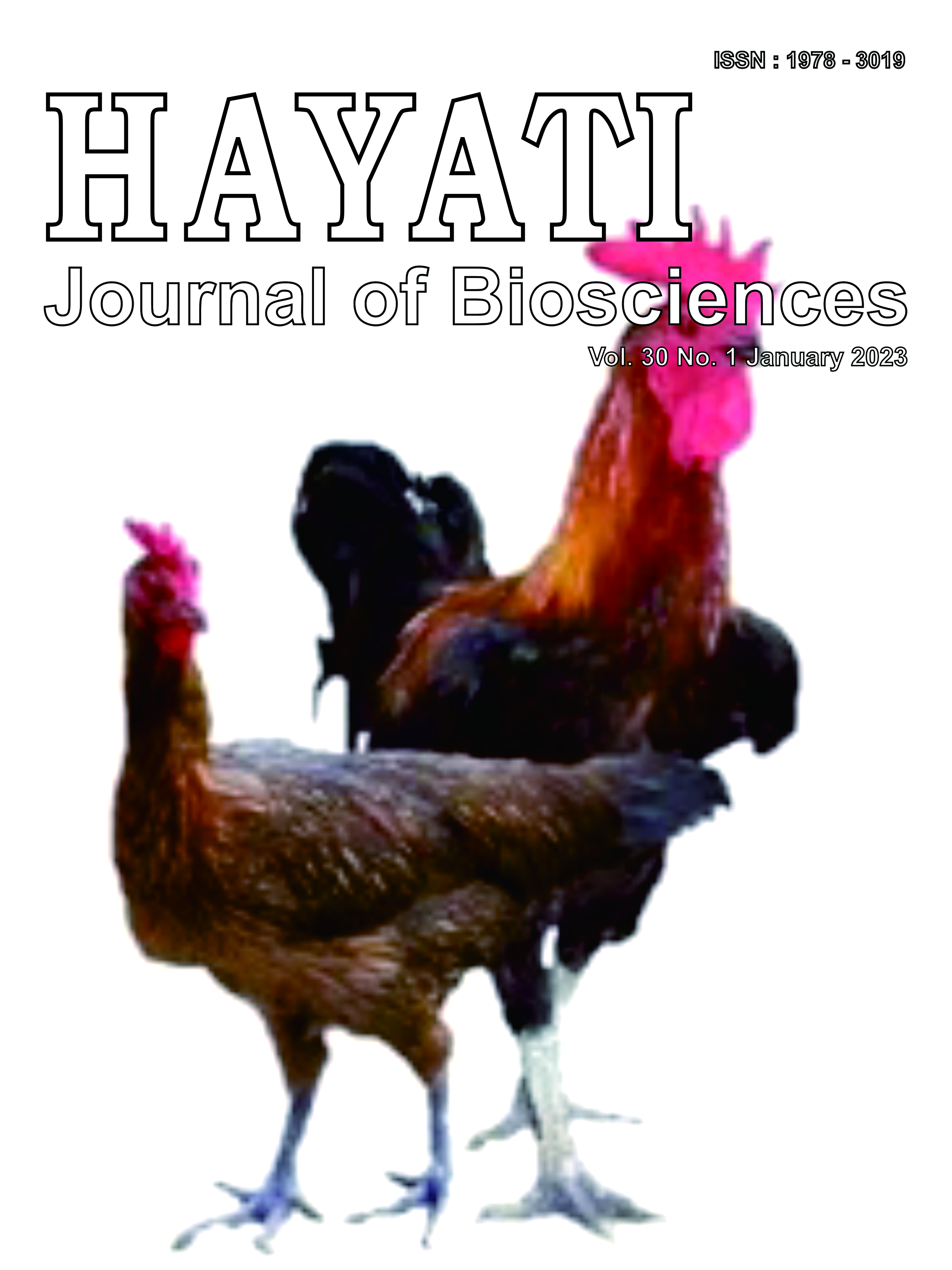Genetic Diversity of Eight Native Indonesian Chicken Breeds on Microsatellite Markers
Abstract
Indonesia has diversity in native chickens based on phenotypes. This diversity is utilized for economic purposes such as meat, eggs, fancy, crowing, and fighting. This study aimed to determine the genetic structure of eight native Indonesian chicken breeds with microsatellite markers, the genetic distance, and inbreeding coefficient of each breed of chicken used for crossbreeding programs to obtain a positive heterosis effect for selection programs. The samples used were Arab, Merawang, Pelung, Sentul, Cemani, KUB, Black Kedu and White Kedu. Broiler chickens (Cobb) were used as the outgroup in this study. A total of 192 DNA samples from eight breeds were used in this study. A total of 24 microsatellite markers were used in this study to observe the genetic diversity of 8 native breeds. The POPGENE, Cervus, and FSTAT were used to generate the observed number of alleles, the effective number of alleles, observed heterozygosity value, expected heterozygosity value, the heterozygote deficit within the breed (FIS), gene flow (Nm), Hardy-Weinberg equilibrium, Polymorphism Information Content (PIC), and UPGMA tree. The principal component analysis (PCA) was performed using adegenet package of R software. Bayesian clustering assignments were analyzed using the STRUCTURE program. This study revealed a very close genetic relationship between seven native chickens and broilers. We also found Arab chickens separated from other Indonesian native chickens and no inbreeding in eight native Indonesian chicken breeds. In conclusion, we found two clusters among eight native Indonesian chicken breeds. Twenty microsatellite markers have a high PIC value in this study.
Downloads
Copyright (c) 2023 Tike Sartika, Ferdy Saputra, Hideaki Takahashi

This work is licensed under a Creative Commons Attribution-NonCommercial 4.0 International License.
HAYATI J Biosci is an open access journal and the article's license is CC-BY-NC. This license lets others distribute, remix, tweak, and build upon author's work, as long as they credit the original creation. Authors retain copyright and grant the journal/publisher non exclusive publishing rights with the work simultaneously licensed under a https://creativecommons.org/

























.png) IPB University
IPB University Department of Biology
Department of Biology The Indonesian Biological Society
The Indonesian Biological Society 

